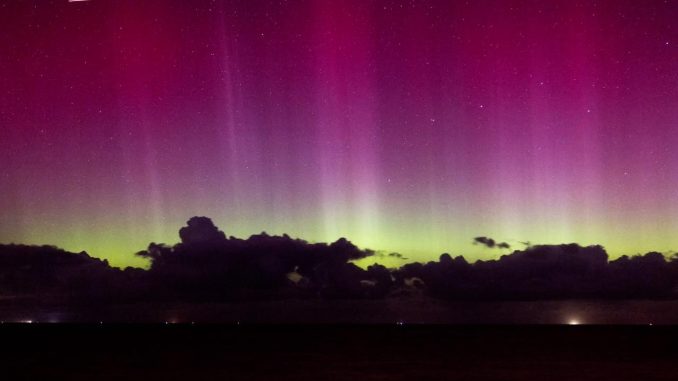
Sky turns pink and green: What are the Northern Lights? | Domestic
Northern Lights: A Spectacular Natural Phenomenon
In various places in the Netherlands, the sky turned pink and green on Sunday evening due to the northern lights. NU.nl readers from North Brabant to North Holland sent photos of this special natural phenomenon. But what exactly are the Northern Lights?
The Science Behind the Northern Lights
The Northern Lights, also known as the Aurora Borealis, are caused by electrically charged particles from the sun colliding at high speed with oxygen and nitrogen particles in the Earth’s atmosphere. When these charged particles collide, they release energy in the form of bright, colorful lights.
The primary colors observed in the Northern Lights are pink and green. The pink color occurs when the charged particles collide with oxygen molecules at lower altitudes, while the green color is produced by collisions with oxygen molecules at higher altitudes.
The intensity of the Northern Lights depends on the speed and frequency of these collisions. The faster the particles go and the more frequently they collide, the stronger and more vibrant the Northern Lights appear in the sky.
Why are the Northern Lights becoming more visible in the Netherlands?
The Northern Lights are typically associated with the far north, such as countries like Norway, Sweden, and Iceland. However, in recent years, they have been visible in the Netherlands more frequently. This can be attributed to the solar cycle.
The sun goes through an approximately 11-year cycle, alternating between periods of high and low activity. During the active phase of the solar cycle, the sun emits more particles, including those responsible for the Northern Lights. As a result, there is a greater chance of witnessing this natural phenomenon in regions closer to the equator, such as the Netherlands.
We are currently approaching a period of increased solar activity, which means that the sun will release more particles into space. This increased activity makes it more likely for the Northern Lights to be visible in the Netherlands and other regions further south.
The Best Time and Places to Spot the Northern Lights in the Netherlands
While the Northern Lights can be seen in the Netherlands, it’s important to note that they are still relatively rare occurrences. The best time to witness this natural phenomenon is during clear, dark nights with minimal light pollution.
Here are a few tips for spotting the Northern Lights in the Netherlands:
- Choose a location away from major cities and light sources to minimize light pollution.
- Check the weather forecast to ensure clear skies.
- Stay up late or wake up early, as the Northern Lights are more likely to be visible during the night or early morning hours.
- Be patient. Seeing the Northern Lights requires a bit of luck and timing.
If you’re lucky enough to witness the Northern Lights in the Netherlands, make sure to capture the moment by taking photos or videos. Share them with local news outlets and astronomy enthusiasts to contribute to the documentation of this rare phenomenon in the region.
A Magical Experience
The Northern Lights are a truly magical experience. The vibrant colors and dancing patterns in the night sky create a breathtaking spectacle that leaves observers in awe. Whether you’re in the far north or closer to the equator, witnessing the Northern Lights is a rare and unforgettable occurrence.
So keep an eye on the night sky, prepare your camera, and get ready to be captivated by the enchanting beauty of the Northern Lights.

Be the first to comment